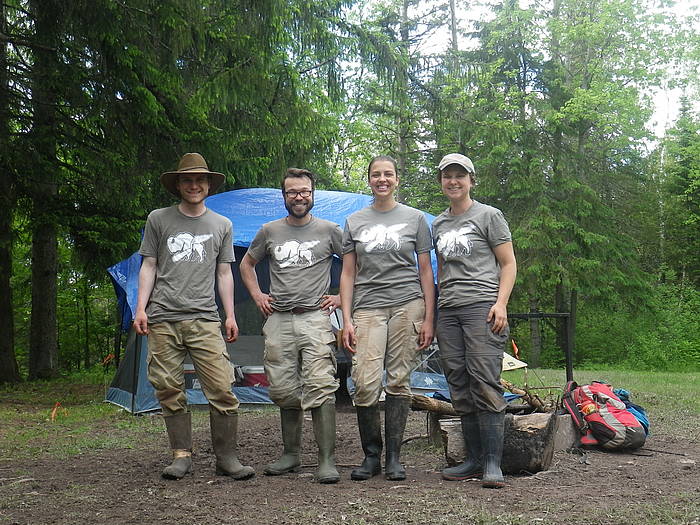
NDSU anthropology students gained real-world experience through an archeological field school last summer led by assistant professor John Creese.
Creese and his students spent four weeks in May-June 2016, searching the north woods of Wisconsin for clues to a 17th century Native American village of the Wyandot tribe.
Creese is an anthropological archaeologist who specializes in early historic Indigenous village communities in the Great Lakes region. His focus on the trip was to find a Wyandot village near Chequamegon Bay along the shore of Lake Superior.
A French Jesuit priest established a mission, named “Saint-Esprit,” at the village in 1664, and sent letters back to his supervisors. From those historical documents, Creese’s team made their best guesses about where remnants of the village might lie.
“We wanted to find this very important site for the history of that tribe and the region,” Creese explained. “The Wyandot originated in southern Ontario, and in 1650, they were forced westward because of wars with the Iroquois, as well as epidemic diseases the French had introduced.”
This was a community-based research project, where Creese and his students worked closely with contemporary Wyandot tribes in Michigan, Kansas and Oklahoma. Proper permission and permits were acquired.
“From the Wyandot perspective, this is a part of their history that has been largely neglected. It’s kind of a black box,” Creese said. “The period from when they were in Ontario until the early 19th century is not well known. They want to understand more about this part of their history.”
The research team included NDSU anthropology students Lindsey Miller and Eric Thibert; University of South Carolina doctoral student Samantha Yaussy; and collaborator Heather Walder, formerly on the faculty of the University of Wisconsin-Madison and now at Michigan State University.
As they camped out for four weeks, the students learned how to put in survey lines, excavate test pits, screen soils and record artifacts.
Often working in the rain, they dug and dug – more than 300 test pits in all.
Creese and the students discovered some stone tool debris, perhaps left by someone chipping an arrowhead or spear point about 2,000 years ago.
They did not find the village, but students learned lessons and developed skills they will carry into their personal and professional lives.
“It was a very meaningful experience, both personally and academically,” said Miller, a senior from Belfield, North Dakota. “My favorite part of was every time we found an artifact, like a stone flake from a projectile, we'd all run together to see it. It never gets old making new discoveries like that.
“I learned so much about the Wyandot, including their way of life and how they moved through Chequamegon Bay. The survey gave me great experience to apply to future cultural resource management jobs, and was well worth all the rain,” Miller said.
The search left many unanswered questions for Creese. “We wanted to know how the Wyandot were able to maintain their society. We were interested in their health, well-being and livelihood,” he said. “We wanted to know how they survived the disruptions and dislocations associated with early European colonization.”
This summer, Creese will meet with tribal leaders to discuss a next step. Perhaps in the future, he’ll take students to explore an area near Green Bay, where a Wyandot village has been located. Maybe he’ll look elsewhere. But, he definitely plans another field school in 2018.
“All of the historical dots are not connected for the Wyandot,” Creese said. “I am motivated by the needs of people. Identity is meaningful and history is part of that. If I, as an academic, can help provide that story, then that could be something that’s important for the next generation.”
As a student-focused, land-grant, research university, we serve our citizens.